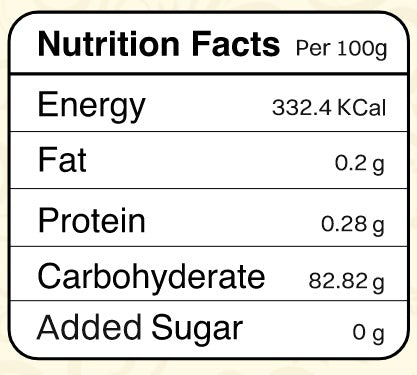TYTY Sciences
TYTY Solai Honey (Kashmiri) | (100% Pure)
TYTY Solai Honey (Kashmiri) | (100% Pure)
Couldn't load pickup availability
- Honey is the only insect-derived natural product that has nutritional, cosmetic, therapeutic, and industrial value!
- Approximately 31 varied minerals have been found in honey, including all of the major minerals, such as phosphorus, sodium, calcium, potassium, sulfur, magnesium, and chlorine.
- Honey has a potential therapeutic role in the treatment of disease by phytochemical, anti-inflammatory, antimicrobial, and antioxidant properties. Flavonoids and polyphenols, which act as antioxidants, are two main bioactive molecules present in honey.
- Some varieties of honey possess large amounts of friendly bacteria. This includes up to 6 species of Lactobacilli and 4 species of Bifidobacteria. This may explain many of the “mysterious therapeutic properties of honey.
Storage:
Here are some tips on how to store this at home:
- Keep it sealed: Ensure that the honey container is tightly sealed after each use. This prevents moisture absorption and helps preserve the honey's freshness.
- Store at room temperature: Honey is best stored at room temperature, away from direct sunlight or heat sources. Avoid exposing it to extreme temperatures, as this can affect its flavor and consistency.
- Choose the right container: If the honey comes in a plastic or glass jar with a lid, use that for storage. Otherwise, transfer the honey to an airtight container to protect it from air and moisture.
- Avoid refrigeration: Honey should not be refrigerated, as it can cause crystallization and change its texture. Refrigeration is not necessary for the preservation of honey.
- Protect from light: Store honey in a dark place or in a container that blocks out light. Exposure to sunlight or UV rays can degrade the quality and nutritional properties of honey.
- Prevent contamination: Always use clean utensils or spoons when scooping honey from the container. Avoid introducing moisture, food particles, or foreign substances into the honey, as they can promote spoilage.
- Natural Changes: Over time, honey may undergo natural changes such as crystallization or darkening in color. These changes are normal and do not indicate spoilage.
Shelf Life:
The shelf life of this product is 2 years.
Honey for skin and hair nourishment!
Honey with Milk
Take 1-2 teaspoon of Honey.
Add 1-2 teaspoons of milk to it and form a paste.
Apply this mixture on the skin for 5-6 minutes and wash with tap water.
Use this remedy 2-3 times a week to get rid of dry skin. Honey with Multani mitti
Take 2 teaspoons of Multani mitti.
Add 2 teaspoon of Honey and rose water to it.
Mix evenly to form a paste.
Apply on the face, neck and hands and leave for 5-6 minutes.
Wash well with tap water.
Use this remedy 2-3 times a week for acne free, soft and glowing skin.
Honey for health use!
Honey in Milk
Take one glass of lukewarm milk.
Add 1-2 teaspoons of Honey.
Drink it preferably at night for good health. Honey in Luke Warm Water
Take 1 glass of lukewarm water.
Add 1-2 teaspoon of Honey and mix well.
Drink it preferably on an empty stomach in the morning for better digestion.
Culinary Uses of Honey
- Honey can be drizzled over any salad, but works particularly well with grilled chicken or steak.
- Fresh citrus juice, sweet honey, and tangy mustard combine for a finger-licking-good dressing to pour atop melons and cucumber.
- Use it in salad dressings or marinades; drizzle over cheese, toast, or ice cream; or package in a cute jar, give as a gift, and make someone very happy.
- Honey is sprinkled over baked, spiced nuts for a tasty and healthy snack. The smoky-spicy snack will store well in an airtight container for several days.






